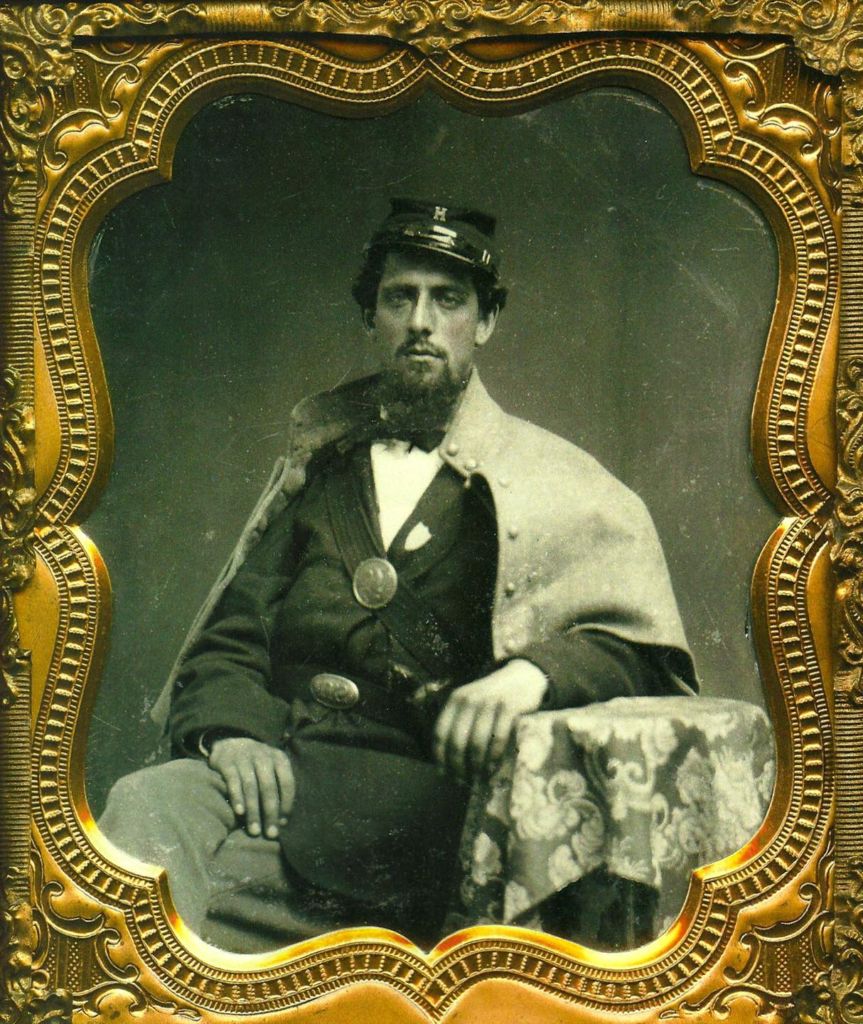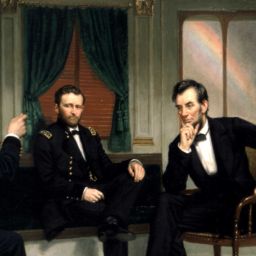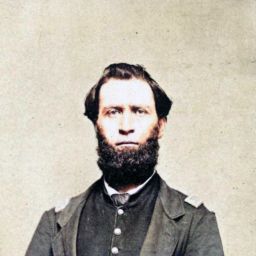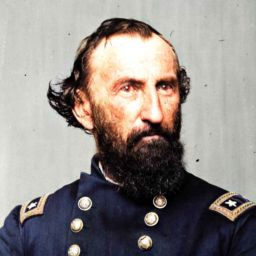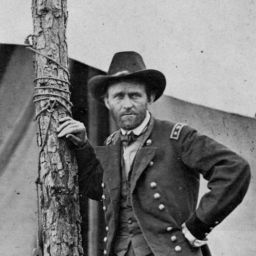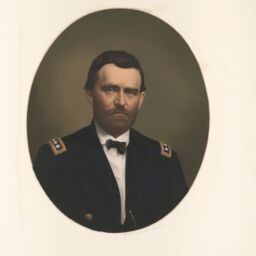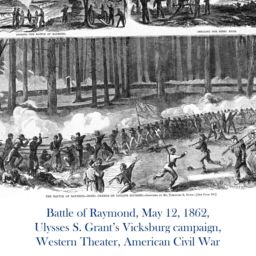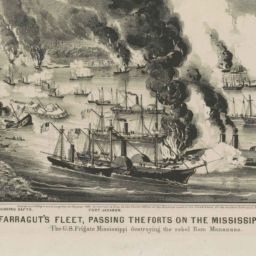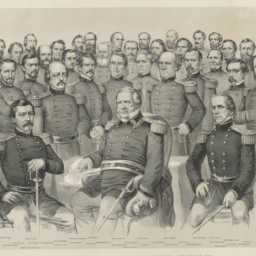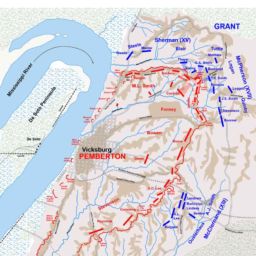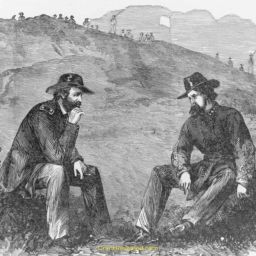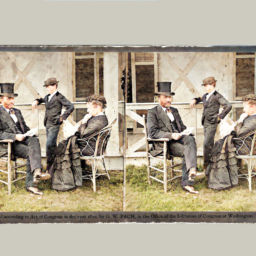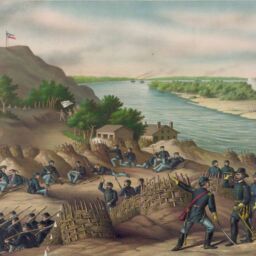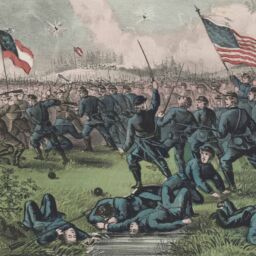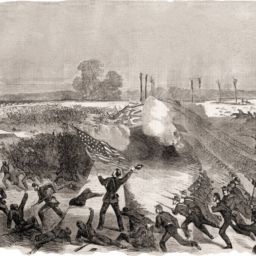
American Civil War, Eastern Theater, Gettysburg campaign. On July 1, 1863, concurrent with the final days of Ulysses S. Grant’s siege of Vicksburg, Mississippi, the Battle of Gettysburg began 1,000 miles away in Pennsylvania.
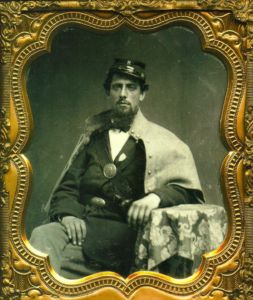
It feels like an interesting confluence to me that recently my friend and former graduate school instructor Rev. Dr. R. Guy Erwin (see my dedication page), president of the United Lutheran Seminary in Gettysburg (of Seminary Ridge) and Philadelphia, recently discovered that a distant relative of his, Captain Frederick Klinefelter, participated in the Battle of Gettysburg, commanding Company A of the 26th Pennsylvania Emergency Militia.
From Guy’s public Facebook post, July 1, 2022:
At ULS, of course, today marks the anniversary of the horrible Civil War battle that changed our Gettysburg campus for all time, and in a sense, put the Seminary forever “on the map” of American history. As a child, I learned about “Seminary Ridge” long before I knew what either a seminary (or a Lutheran) was, and even now when I meet new people who don’t know ULS I can sometimes “see the penny drop” when they put it together and realize “oh, THAT’s why it was called Seminary Ridge!”
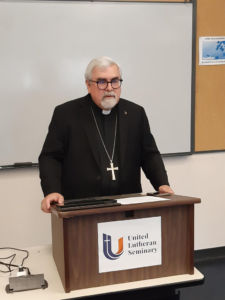
But without the awful battle we could not have had the great victory that thwarted Lee’s plan to bring the war to the North, and which sealed the fate of the rebellion and the slavery it represented. Those bloody days that followed at Gettysburg—which coincided with the fall of Vicksburg in the West, where my Erwin ancestors were fighting—didn’t end the war, but they certainly shifted events irreversibly in the Union’s favor.
I learned the other day quite by chance that I had a relative who fought at Gettysburg. My husband Rob could already boast of a 3rd great-grandfather who fought there with a Pennsylvania regiment, but what I hadn’t known was that a cousin of mine (technically my 2C6R), Gettysburg seminarian Frederick Klinefelter, was the captain of the little company of Gettysburg College and Seminary students that was formed as part of an emergency regiment few weeks before the battle, and (though a little hapless in the outcome) were among the first to engage the rebel army west of Gettysburg. It’s a tangential relationship, but still significant to me.
Guy also notes, incidentally, that Klinefelter undoubtedly spoke both English and German. “Lutheran pastors in his day would have been expected to be able to preach in both.”
More historical context comes from a 2017 Facebook post by the Seminary Ridge Museum and Education Center:
Twenty-six year old Frederick Klinefelter spent the hot days of early June 1863 attending classes inside the four-story brick Seminary building, west of Gettysburg. On June 15, word spread throughout the Commonwealth that Lee’s Army was poised to invade Pennsylvania, resulting in a call for men to help stem the incursion. The next day Klinefelter, who had previously served a three-month term with the 16th PA, joined other volunteers on the campus of Pennsylvania (Gettysburg) College and was elected Captain of the “College Guards.” The following morning, they left for Harrisburg, where they were mustered into the 26th Pennsylvania Emergency Militia. Within seven days, the new regiment set off for Gettysburg, arriving on June 26th. That same morning, Jubal Early’s 5500-man Confederate division moved from Chambersburg towards Gettysburg. Three miles west of town, the cavalry screen of Early’s men descended on the green troops, sending them retreating through the countryside, with Klinefelter’s Company A, in the lead as guides. The regiment halted north of town, faced the enemy again, then retreated to Harrisburg. The regiment took part in the pursuit of Lee’s Army, but saw no further combat and disbanded at the end of July. In August, the Seminary students who had answered the call of their state were commended by the Seminary Board of Directors, who recognized “the heroic conduct of these students…who rushed so promptly to the defense of their country during the late rebel invasion.” Klinefelter later served Lutheran congregations in Philadelphia and Greencastle and was on the Seminary Board of Directors. He died in 1903.
Guy’s post about Klinefelter concludes:
Here’s a picture of Capt. Frederick Klinefelter, Co. A, 26th PA Emergency Militia, looking pretty dashing. He survived the battle, became a Lutheran clergyman, and is buried in Philadelphia.
In the memory and presence of war, we keep praying for peace.
IMAGE
For more about the image, see:
Russinoff, Paul. “Return and Retreat at Gettysburg: A Seminarian Is Called to Arms to Defend His College Town.” Military Images 34, no. 3 (2016): 44–47. http://www.jstor.org/stable/24865739. Therein the caption for a Klinefelter photo is: “Klinefelter, about 1861. Sixth-plate tintype by an [unknown] photographer.”
Note: “Sixth plate” is a size designation, i.e., 2.75″ x 3.25″. See: “19th Century Photographic Plate Sizes.” Christopher Wahren Fine Photographs. (Website.)


